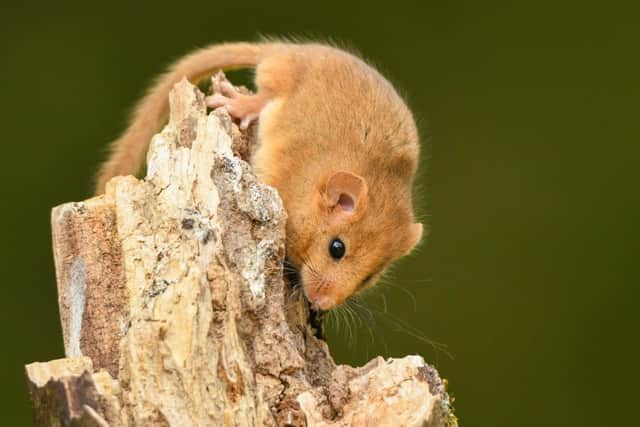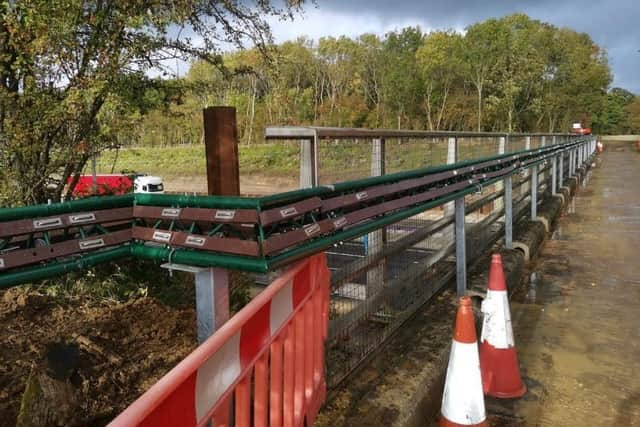Highways England bosses go the extra mile to help rare hazel dormice nesting on verge of M1 at Milton Keynes
and live on Freeview channel 276
The tiny golden-brown mice, which weigh the same as than an AA battery, have even been provided with their own special bridges to keep them safe.
It's believed they are descendants of 41 hazel dormice that were first re-introduced into the area 1998 at Little Linford Wood - just 500 metres from the motorway verge.
Advertisement
Hide AdAdvertisement
Hide AdNow staff are taking the M1 colony supplementary food and planting dormouse-friendly plants around them to encourage them to breed more.


Numbers of dormice have plummeted in recent years. Since 2000, the species has declined by more than 50 per cent, leaving the only dormouse native to Great Britain at risk of disappearing altogether.
Paul Unwin, Highways England Regional Lead Sponsor, said: “People might not give much thought to the wildlife that makes it home in roadside verges while on their journeys, but often they can be oasis for wildlife. "
He added: “It’s vitally important that we protect the surrounding countryside and wildlife that makes it home there when we’re build these transformative scheme - not only for this generation but for the many generations to come to enjoy.”
Advertisement
Hide AdAdvertisement
Hide AdThe two dormouse bridges were completed in September last year. Although not obvious to passing motorists, they provide vital connectivity for the dormice, linking suitable habitat on both sides of the carriageway.


As soon as the mice come out of hibernation in April, their progress will be recorded on special monitoring cameras, said Paul.
This will continue until 2030 to establish if there have been any long-term impacts and prescribe further enhancement measures where necessary.
Highways England has already installed 300 dormouse boxes and 120 footprint tunnels along the M1 junctions 13 to 16 motorway upgrade scheme. These are checked monthly by ecologists.
Advertisement
Hide AdAdvertisement
Hide AdDormice rely on arboreal habitat, making the scrub and hedgerows along the motorway very attractive to them.
Highways England’s work with hazel dormice, bats and great crested newts on the M1 junction 13 to junction 16 scheme has taken place under a European Protected Species (EPS) licence granted by Natural England.
In spring 2020, a disease risk analysis was undertaken for the potential transmission of Covid19 from surveyors to dormice. Measures were put in place to reduce the chances of the virus’ transmission by keeping handling to a minimum, wearing gloves and face masks, and using hand gel between nest box checks.